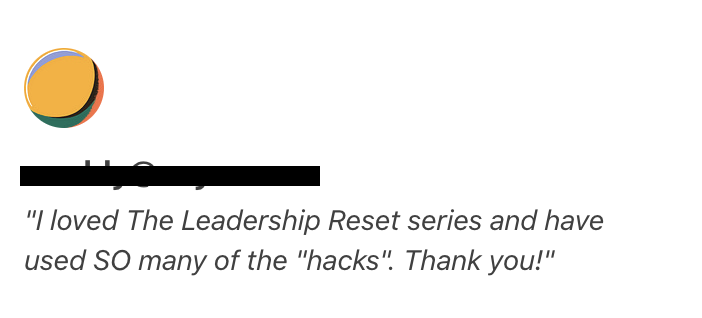The full version of this article is only available for paid subscribers.
I purposefully made the subscription low cost so that anyone will have the ability to work with me and get my best content and latest thinking. As a professionally trained futurist I spend a lot of time exploring trends and sharing exclusive research and insights so that you can excel in your career and be the best leader you can be.
To the hundreds of subscribers around the world, thank you, I appreciate you! Here’s what a recent paid subscriber said
For over a decade now, people like Brené Brown have been talking about vulnerability, the feeling you get when you share or do something that emotionally exposes you or forces you to deal with risk and uncertainty.
You would think that by now, all of us would be comfortable with vulnerability in our personal lives and even inside of our organizations. But we aren’t, and I’m no exception.
In fact, I’m so uncomfortable with being vulnerable that I actually had a series of panic attacks when I signed the contract to write my new book, Leading With Vulnerability.
Dr. Amy C. Edmondson wrote The Fearless Organization and she’s one of the many thought leaders I interviewed, here’s what she told me about vulnerability which I really loved:
We are all operating in an uncertain, complex, and volatile world. Nobody has a crystal ball or a magic wand. This means we are all vulnerable to harm from external events we don’t anticipate. Vulnerability is therefore a fact. The only question is whether you recognize and are willing to acknowledge it. There’s wisdom in knowing you’re vulnerable and acknowledging it. When you do this, you’re better prepared to handle the risks that uncertainty and complexity bring. When leaders are up front about their vulnerability, others are more willing to speak up and step up to address the challenges that lie ahead. “
Pre-order and send proof of purchase to [email protected] to get 5 bonus exclusive CEO interviews (American Airlines, BD, Edward Jones, WW, and , an invite to an exclusive webinar, and a preview of the book.
It’s clear why vulnerability is so important in our personal lives because it creates connection, trust, relationships, and simply put, it’s a human thing to do. But what about inside of our organizations where we have a very different dynamic at play?
At work we have a hierarchy, bosses, deadlines, projects, responsibilities and deadlines, teams, schedules, and of course the issue of money. Is vulnerability in that kind of an environment the same as it is in our personal lives?
And what if we take this one step further when we think about leaders. These are people who are actually responsible for the lives of others and the fiscal aspect of a team or business. Is vulnerability for leaders the same as it for everyone else?
I think you can see where I’m going with this and the answer is, NO.
Vulnerability at work is not the same as vulnerability in our personal lives and vulnerability for leaders is not the same as it for everyone else inside of your organization. This became abundantly clear from the over 100 CEOs I interviewed and the 14,000 employees that I surveyed.
One of the things the CEOs told me was that they struggled withe reconciling two seemingly opposing perspectives. On the one hand they were expected to be these strong, visionary, confident, and competent leaders, yet on the other hand their employees wanted them to talk about mistakes, failures, challenges, and struggles.
Is it possible to do both? The answer is yes, but what’s the #1 thing holding leaders (and all of us) back and what should you do about it?
Ironically enough, a part of the answer is in the question!


